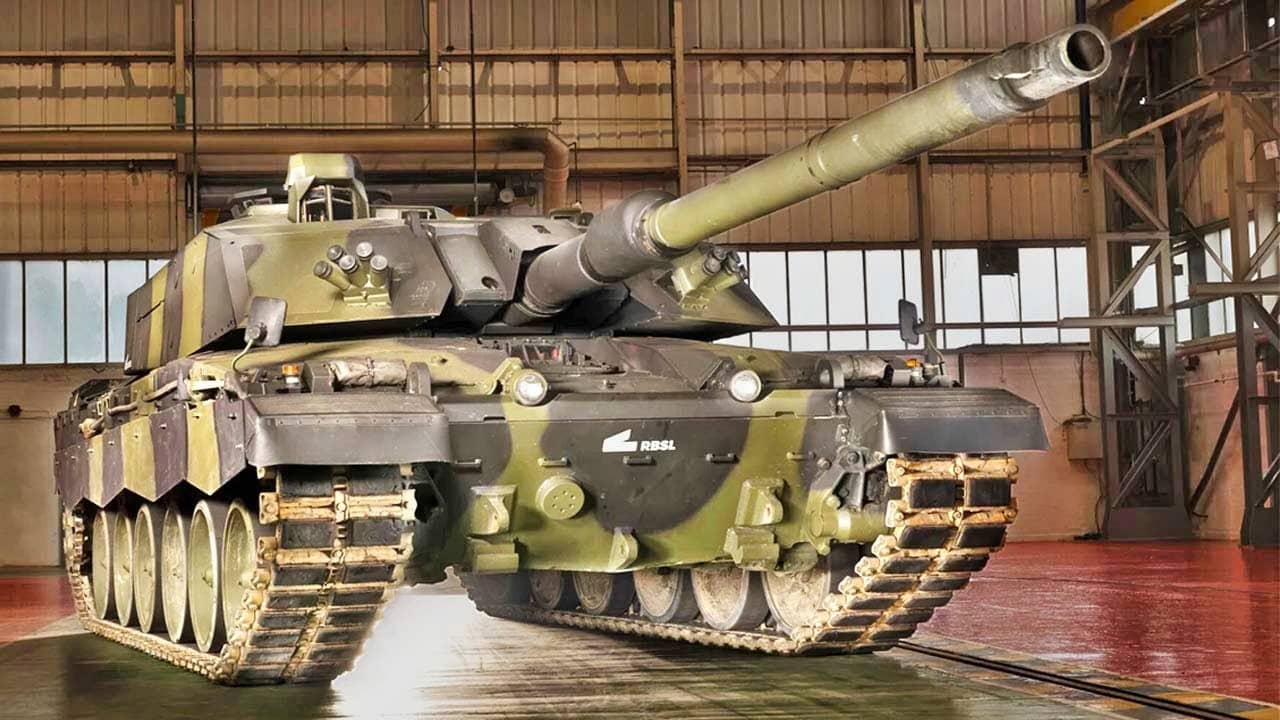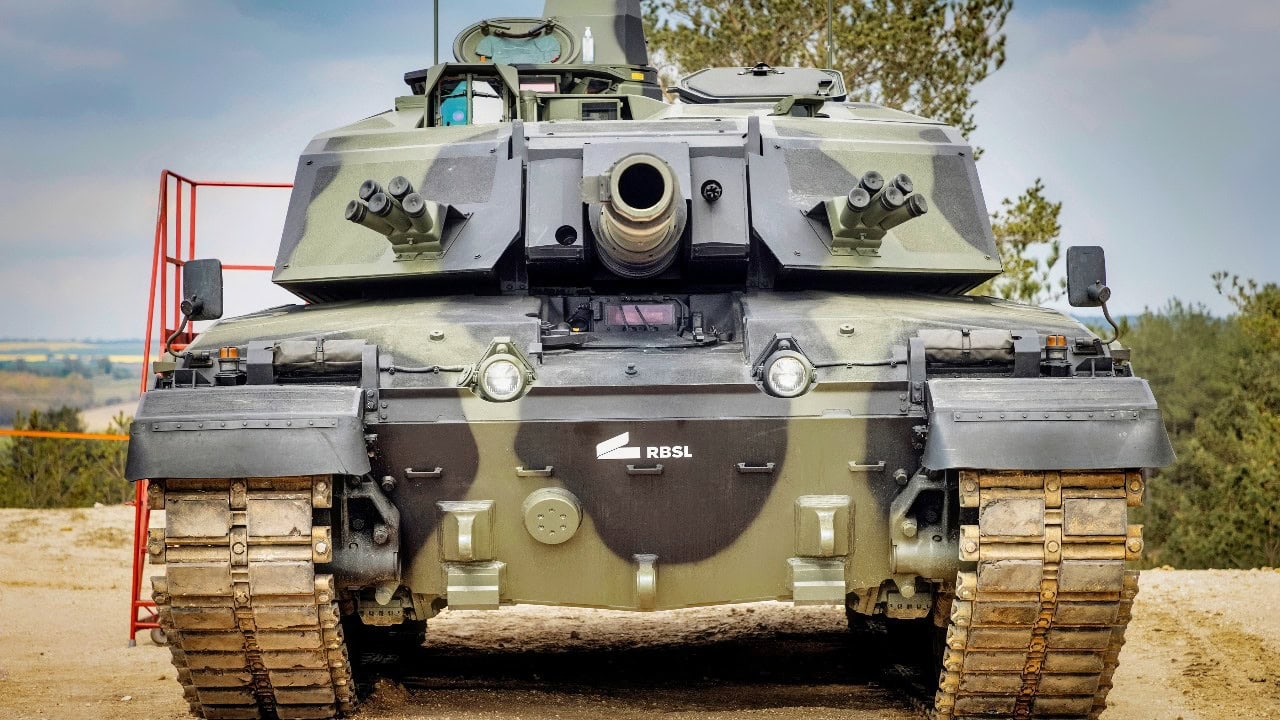Challenger 3 Problems: The Brits fielded a potent main battle tank late in the Cold War. It has been extensively upgraded since then but could now be at the limit of upgradability.
The Challenger 2 has been a mainstay for the British Army for decades. It’s an iterative improvement of the earlier Challenger 1 tank, which builds upon previous British tank designs. Perhaps the main gun is the most unique feature of Challenger 1 and Challenger 2. Like other NATO members, they sport a 120mm main gun, though rather than opting for the NATO-standard smooth barrel design, the barrel is rifled. This design consideration aids the effectiveness of the British Army’s HESH rounds, designed to defeat bunkers, armored vehicles, and other obstacles.

Challenger 3 Tank. Image Credit: Creative Commons.
Well-armed and heavily armored, it has seen service as part of the United Nations peacekeeping mission in Bosnia and Herzegovina and Kosovo, the 2003 invasion of Iraq, and other places. However, the Challenger 2’s most recent, and perhaps most grueling, conflict is happening now: the ongoing war in Ukraine.
War in Ukraine
In January 2023, the United Kingdom became the first Western country to donate main battle tanks to Ukraine after months of demurring. Initially, the British facilitated the donation of Polish T-72 tanks to Ukraine by backfilling the Polish Army’s donations, but eventually, they shipped Challenger 2s to Ukraine directly.
Ukraine has put a number of Challenger 2 main battle tanks to use as part of its Kursk operation. This operation has carved out a piece of Russian territory that Ukraine hopes to use in the future should both Kyiv and Moscow move to the negotiating table.
Most recently, 7 out of 14 donated Challenger 2 tanks are reportedly still operational.
Challenger 3: Out with the Old, in with the New Tank
In any event, the Challenger 2’s sunset is on the horizon and sinking fast. The British Army has previously announced plans to field the Challenger 2’s successor, the aptly named Challenger 3. Featuring extensive upgrades and optimizations, the Challenger 3’s roots are, however, firmly with the earlier Challenger 2 design.
The Challenger is a formidable platform on paper, though it is essentially an extensively upgraded Challenger 2. The most significant difference between the two platforms is the Challenger 3’s redesigned turret, built around a new 120mm main gun. In a significant break from previous Challenger tank designs, the Challenger 3’s main gun is a smoothbore design rather than the traditionally British rifled main gun design.
This affords the Challenger 3 interoperability with NATO-standard 120mm tank ammunition and ends the British use of HESH ammunition, which relies on the spin imparted by rifled barrels to remain effective.
However, despite the wide-ranging improvements and simplified logistics that the Challenger 3 represents, it does have one very significant Achilles Heel: numbers.
Show Me the Numbers
In 2021, Ben Wallace, then the British Defence Minister, announced that 148 Challenger 2s would be upgraded to the Challenger 3 standard. While the Challenger 3 is certainly a formidable platform, one significant factor works against the upcoming British fleet: low acquisition numbers.
The Royal United Services Institute, the United Kingdom’s leading defense and security think tank, issued its opinion on the Challenger 3 acquisition process in a paper that evaluated the British military’s present state and future trajectory. Their conclusion? Potential chaos.
“Similarly, when RUSI analysts last looked at the Army and the combat division the UK claims to have, it measured the number of main battle tanks and self-propelled artillery in the UK’s inventory and found the numbers wanting when set against a ‘credible’ armoured division of anywhere from 170 to over 300 tanks and around 110 to 220 artillery pieces,” RUSI explained.
“The numbers have not improved in the subsequent four years: under the Challenger 3 programme the UK will have a total of 148 main battle tanks (in 2030).”
The think tank also concluded that “meanwhile, the UK has essentially removed the AS90 artillery from service by donating 32 to Ukraine, replacing them with 14 Archer guns until such time as the ‘Mobile Fires Platform’ is procured (some time ‘this decade’).”

A British Army Challenger 2 Main Battle Tank (MBT) lays down a smoke screen during Spring Storm 19, Estonia’s largest annual military exercise. Roughly 9,000 soldiers from Estonia, other NATO Allies and partner nations have gathered near the town of Jõhvi to engage in a collective defence exercise, strengthening their ability to work together in times of crisis. The exercise runs from 29 April until 10 May.
“The Challenger 3 may be the ‘most lethal tank’ ever fielded by the British Army,” RUSI concluded, “but it is going to be available in such limited numbers that it will have to perform heroically in the face of a notional foe in the form of Russian ground forces, such as a Combined Arms Army.”
What Happens Now?
While the Challenger 2 represented a step change over the capabilities of its predecessor, the Challenger 1, it has grown long in the tooth since entering service with the British Army in the mid-1980s. While its successor, the Challenger 3, is unquestionably a more capable platform than the Challenger 2, upgrading that Cold War-era design to its absolute limits leaves precious little room for future upgrades.
As one British parliamentary report said, the Challenger upgrade program is a “woeful story of bureaucratic procrastination, military indecision, financial mismanagement, and general ineptitude, which have continually bedeviled attempts to properly re-equip the British Army over the last two decades.”
About the Author: Caleb Larson
Caleb Larson is an American multiformat journalist based in Berlin, Germany. His work covers the intersection of conflict and society, focusing on American foreign policy and European security. He has reported from Germany, Russia, and the United States. Most recently, he covered the war in Ukraine, reporting extensively on the war’s shifting battle lines from Donbas and writing on the war’s civilian and humanitarian toll. Previously, he worked as a Defense Reporter for POLITICO Europe. You can follow his latest work on X.

